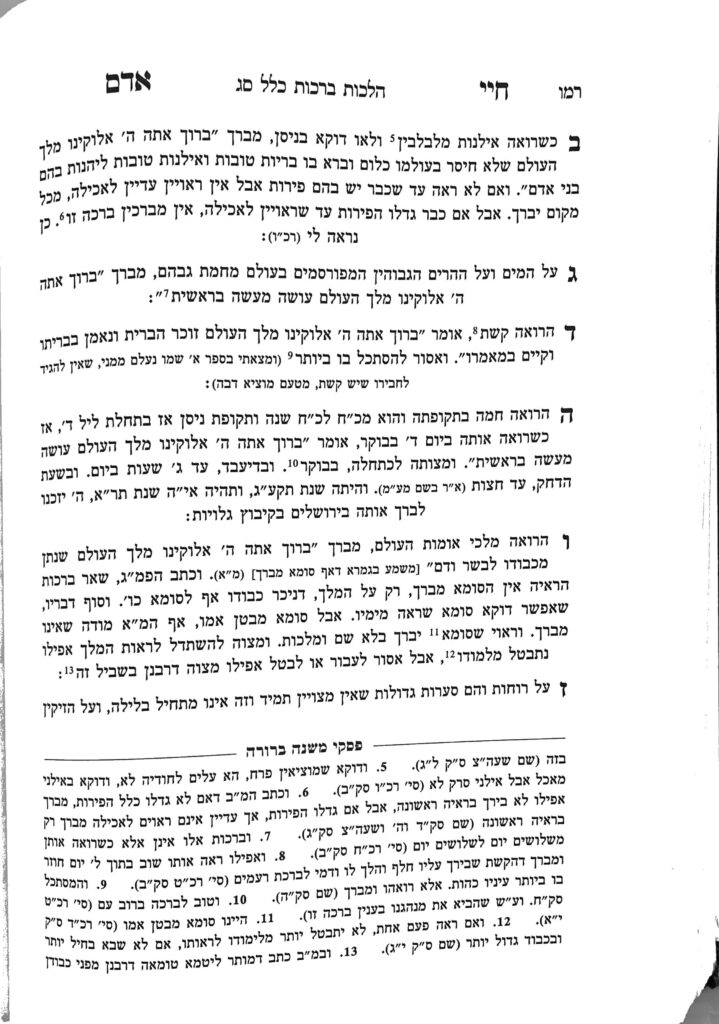We are beginning siman 2. When one sees fruit trees in their first stage of budding, which is when the flower which precedes the fruit emerges from the branch, one recites the bracha of shelo chisar b’olamo klum. The Gemara says that the bracha is generally made in Nissan. However, Nissan is not a hard rule, but rather an approximation of when trees begin to flower. If one lives in an area where trees flower earlier or later, they make the bracha at that time.
If a person does not see the tree until the fruit has begun to develop, they may still make the bracha until the fruit has reached an edible stage. (Once the fruits are edible, the correct bracha is shehecheyanu, as we learned in the previous Klal.)
The bracha is only only flowers, not for leaves.
The bracha is not limited to the first time one sees such a tree. One may make the bracha on a subsequent sighting if they were not able to make it the first time.
A person is not obligated to seek out a fruit tree in order to make the bracha.
There is an opinion that a person should make the bracha on a grove of more than one tree. If a person happens upon a single tree, they should make the bracha nonetheless.
A person may make this bracha on shabbos. However, there are two hesitations mentioned among the poskim about refraining from this bracha on shabbos. One is the fear that a person will carry their siddur when they go to say it, and the second is kabbalistic. However, if one sees the tree on shabbos and is able to say the bracha (either due to a eruv or because they know it by heart), they may do so.
Summary
- When one sees a fruit tree in their first stage of budding, regardless of the time of year, they recite the bracha of shelo chisar b’olamo klum.
- The bracha may be recited until the fruits are edible.
- The bracha is for flowers which will develop into fruit, not for when the leaves start to grow on the tree again.
- One may make the bracha on a subsequent sighting of the tree if they were not able to make it the first time.
- One is not obligated to seek out a fruit tree in order to make the bracha.
- Although there are opinions that the bracha should be made on at least two trees, and not to make the bracha on shabbos, we are not stringent about following these opinions.



